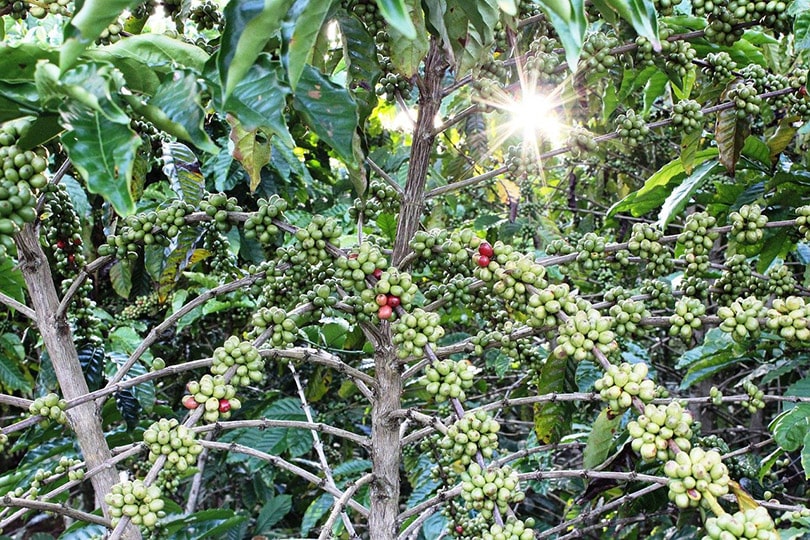
If you enjoy reading up on your favorite subjects, and you’re a fan of coffee, you may have read a coffee article or two. (We know where you can find some!) In these articles, you may see the writers talking about the different types of coffee plants, where coffee is grown, or even how to make a great latte.
And, if we’re being honest, it’s possible to be left a bit confused when reading coffee articles thanks to the different wording in each one with some researchers saying coffee is grown on plants, others saying shrubs, and even some using the word trees. For truly curious readers, they are left wondering, well, which is it?
We all know that money doesn’t grow on trees but does coffee? If you want to be exact, and correct in the use of the word, the answer to that question is yes, coffee does grow on trees. Small ones, but trees are just the same. While using the term coffee plants is okay considering a tree is a plant, the word shrub does not exactly fit, all the time. Let’s take a deeper look at the coffee “tree” and why the experts say that’s where these beloved plants fit into the world.
What Is a Tree?
The Colorado State Forest Service defines a tree as a tall plant with woody tissue. So, there you have it. All trees are plants, right? Now, that is out of the way, we need to learn a few other things before we look at the coffee plant. Bushes and shrubs are woody plants, like a tree, just a bit shorter. Most of the time this classification comes in when for mature, woody plants that fall between 1 ½ to 10 feet tall. If you go smaller in size, it’s considered ground cover. If you go higher, well, you have a tree.
Many people believe that trees only have one trunk. That isn’t the case. You’ll find several varieties of trees out there that have multiple trunks. You can even find shrubs and bushes that have only one when having several is the norm. Nature is special like that. That’s why, instead of focusing on the trunks, most plant experts prefer to keep an eye on the height once the plant is matured to determine whether it is or isn’t a tree.

Enter the Coffee Plant
When it comes to the coffee plant, determining whether it is a tree or a shrub can be difficult according to the particular species. There are rare varieties of coffee plants out there that simply don’t grow tall enough to be considered a tree. The Coffea humbertii and the Coffea rhamnifolia are both examples of coffee plants that would be considered shrubs. The most popular coffee plants out there, the ones most of the coffee we drink comes from, do have the distinction of being called small evergreen trees.
Coffea arabica and Coffea canephora, better known as Arabica and Robusta plants, are the most grown coffee plants in the world. When left to their own devices, these trees can grow to about 16 feet in height. Thanks to our love of coffee, however, it is quite common for farmers to prune them to a more manageable size. This pruning is where the confusion comes into play. Often, the trees of these 2 varieties are called shrubs, when they truly aren’t.
Does Size Matter?
When asking whether size matters, it depends on who you talk to. For the farmers who grow the coffee we bumble our way to the kitchen each morning to indulge in, they may say yes. Can you imagine how difficult it would be for them to pick cherries from a 16-feet tall coffee tree? That would make their lives much harder. And yes, the fruits on the coffee trees are called cherries. The coffee beans are actually hidden inside. There’s so much about these amazing plants to discover!
Another important thing to note when it comes to coffee trees is their longevity. Most trees have a long life cycle. This can also be said for coffee. If well cared for, coffee trees can produce for years and help farmers make a living. Keeping them a smaller size helps do this, but it doesn’t change that deep inside, they are still small trees.

Final Thoughts on Coffee That Grows on Trees
While every coffee plant can’t be called a tree, most of them can. Whether it comes from a tree or a shrub, the important thing to remember is the people behind the coffee in your cup and the respect they deserve. Always keep the farmers in mind, and thank them for their contribution to you living a day enriched by your favorite coffee beverage.
Featured Image Credit: sarangib, Pixabay













